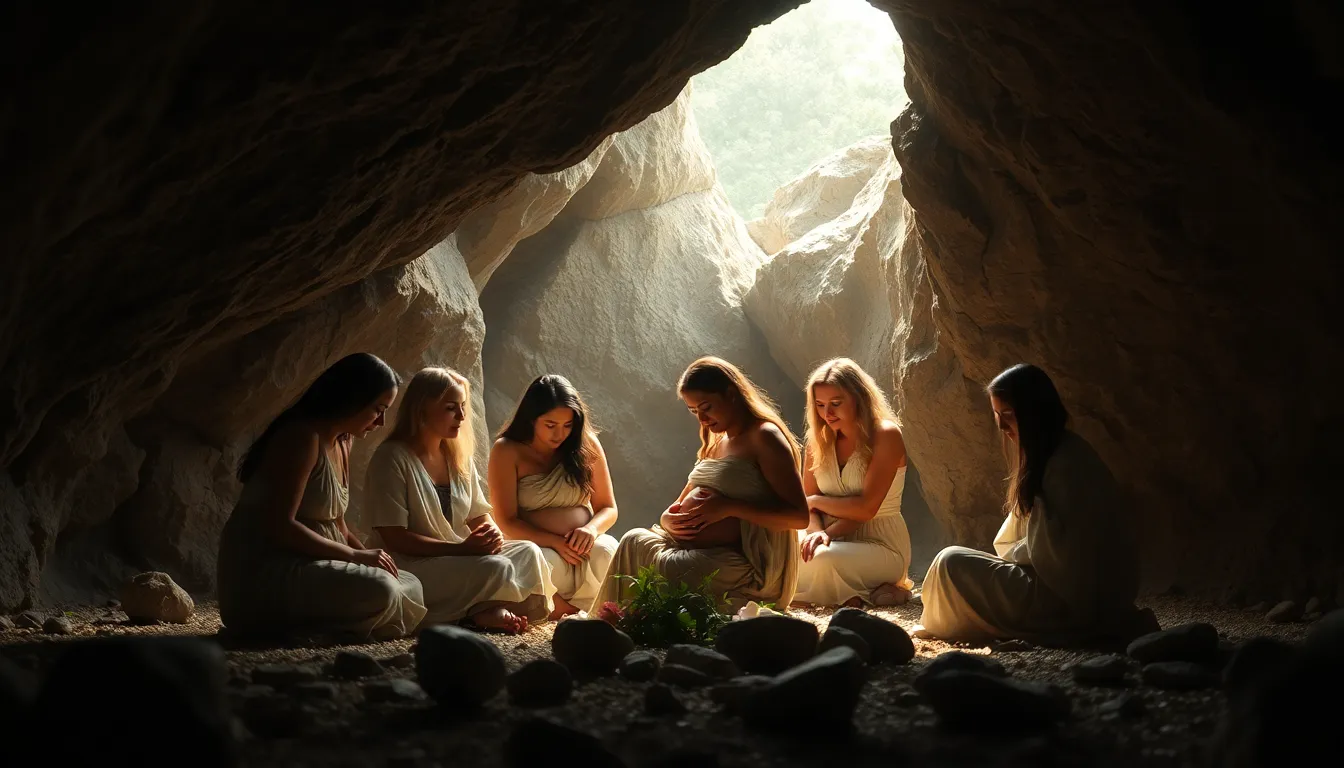Imagine a place where ancestral women boldly brought new life into the world, far removed from sterile hospitals and neon lights. Welcome to the birthing cave, a fascinating yet often overlooked aspect of human history. In an age dominated by technology, remembering these natural sanctuaries reminds us how our forebearers embraced the primal act of childbirth. Buckle up for a journey through time, cultures, and the science of birthing caves, where nature and nurture met long before modern medicine took center stage.
Historical Significance of Birthing Caves

Birthing caves have been a significant part of human history, shaping the way communities approached childbirth. Archaeological findings reveal that ancient cultures often sought out secluded caves for labor, providing a natural sanctuary removed from the prying eyes of society. Evidence from the Paleolithic era shows that women would take refuge in caves during childbirth, where they felt safe and secure.
These dark, quiet spaces offered a sense of warmth and protection, far from the chaos of the outside world. Caves were frequently associated with fertility and the continuity of life, making them ideal venues for such a critical life event. Historical texts and oral traditions from various cultures often celebrate caves as sacred sites, reinforcing their significance in the reproductive journey of humanity.
Cultural Practices Surrounding Birth
Birth practices vary dramatically across cultures, and birthing caves are intimately tied to many traditions around the world. In some indigenous tribes, laboring women will journey to a special cave to deliver their babies, sometimes accompanied by elders or skilled midwives. This ritual is steeped in ancient wisdom, as the caves are believed to be imbued with ancestral spirits, offering protection during delivery.
In other regions, the practice involves creating temporary chambers mimicking caves, using blankets and other materials to provide a snug environment. These practices underline the shared human experience of childbirth while highlighting the adaptations made in different cultures. Rituals often include chanting, drumming, or other communal activities, emphasizing the importance of collective support during this transformative time. By understanding these practices, we can appreciate the interconnectedness of different cultures and the significance of place in the childbirth experience.
The Science Behind Birthing Caves
The science of childbirth has evolved, but the appeal of natural settings is supported by modern research. Studies show that environments conducive to relaxation can significantly impact labor outcomes. Birthing caves, with their natural acoustics and stable temperatures, create a calming atmosphere that supports physiological processes.
Scientific studies indicate that women who give birth in environments that feel safe and intimate often experience reduced stress levels. Lower stress can mean decreased labor times and less need for medical interventions. The sensory aspects of birthing caves, the smell of earth, the sound of dripping water, and the sight of rock formations, can stimulate calming hormones such as oxytocin, enhancing the body’s natural ability to birth. Historically and scientifically, the connection between place and the birthing experience is profound and deserving of exploration.
Modern Interpretations and Uses
Today, the concept of birthing caves is experiencing a renaissance. Midwives and doulas often advocate for home births in tranquil settings that mimic the natural environment of ancient caves. Many birthing centers are designed with soothing aesthetics, soft lighting, natural materials, and cozy corners, creating a modern take on the old practice.
Also, the popularity of water births taps into the primal pull of natural elements similar to caves. Birth pools offer a soothing environment, and the water provides buoyancy, making labor less arduous. Some hospitals have also adopted these principles, incorporating private labor and delivery rooms that emulate the calmness of caves, complete with dim lighting and soft textures. This modern interpretation acknowledges the importance of environment while providing the safety that contemporary medicine offers.
Personal Stories and Experiences
Experiences in birthing caves, whether historical or modern, often resonate powerfully with those who have engaged in or researched them. One woman recalls her experience in a cave-like setting, noting the deep sense of connection she felt to her ancestors. She describes the soft echoes of her breathing bouncing off the cave walls, creating a rhythm that mirrored her contractions.
Others have shared their stories of laboring in spaces that intentionally replicate the cave experience, emphasizing how the environment bolstered their confidence. The stories serve not only as testimonials to the efficacy of alternative birthing settings but also as a celebration of women’s strength and resilience through history. Each account adds layers to our understanding of birthing practices across cultures and generations.
The Impact on Maternal Health
The exploration of birthing caves and their modern counterparts highlights a crucial dialogue about maternal health. Providing environments that empower women is essential for optimal childbirth experiences. The psychological benefits of feeling safe and supported during labor can have lasting effects on both mother and child.
Research indicates that environments tailored for the birthing process can substantially improve outcomes. Women who feel comfortable are more likely to have positive birth experiences, leading to better mental health postpartum. Also, emphasizing natural settings has shifted conversations about how healthcare systems approach maternal care, inspiring advocates to push for more holistic methods.*
Empowering women with choices about where and how they give birth warrants attention and advocacy. The birthing cave symbolizes a return to a more instinctual understanding of labor, a movement for which many are advocating in the current landscape of maternal health.













